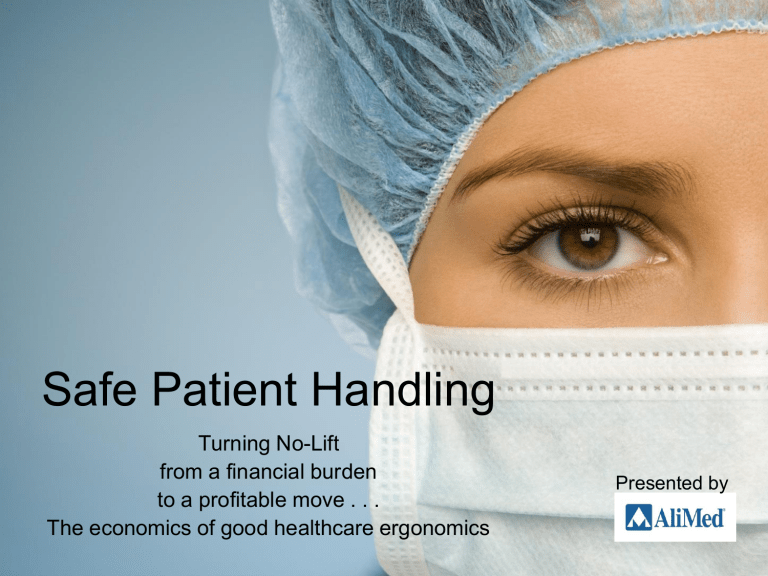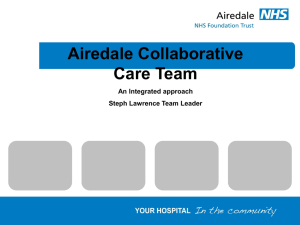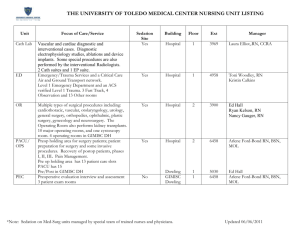Safe Patient Handling

Safe Patient Handling
Turning No-Lift from a financial burden to a profitable move . . .
The economics of good healthcare ergonomics
Presented by
The problem facing nurses
38%
48%
70%
40%
47%
12%
Suffer patient handling injuries
Have chronic pain from patient handling injuries
Of injuries are lumbar spine
#1 problem is physical demands of job
Considered leaving because of physical demands
Leave because of back injuries
The Problem facing facilities
Reduced revenues
Cash flow
Staff turnover
Cost to replace staff
Pressure from staff
Cost of Workers’ comp
Legislation & compliance
Spiraling costs
What would it cost to implement a
No-Lift policy?
NIOSH recommends 1 lift per 10 beds as a
‘rule-of-thumb’
Assume:
-1 * 600 lb capacity lift per 10 beds
- Each bed equipped with No-Lift
Booster & Turner
-Replacements every 6 months for
Booster, Turner & lifter slings
Based on the above for nursing homes and hospitals, using median values from national statistics the return on investment
Is significant (better than 15:1).
Where will savings come from?
• Workers’ compensation premium reductions
• Fewer lost days – fewer replacement staff
• Lower costs to provide care
• Fewer recruitment costs
National Statistics
– Assume a nursing ratio of 1:8 for a nursing home and 1:6 for a hospital*
– Mean (non loaded) national salary nurses**
• Nursing homes $48,220
• Hospitals $53,450
– Workers’ compensation premium (national median rates***)
• Nurse (ea) in nursing home $5,088
• Nursing to handle 10 beds (based on nurse/resident ratio) $6,106
• Nurse in hospital $1,367
• Nursing to handle 10 beds (based on nurse /patient ratio) $2,317
– Cost to replace a nurse $42,000****
– Mean back injury cost per nurse $12,500*****
– *National Nurse organizing committee/www.nnoc.net
– **www.allnursingschools.com/faqs/salaries/php
– ***www.allbusiness.com: www.wydoe.state.wy.us
: www.wcirb.org
– **** National Nursin organizing committee/www.nnoc.net
– ***** Oregon OSGA Safe Patient Handling: A Worthy Investment, 2007, www.osha.oregon.gov
NoLift saves workers’ compensation premiums
…& backs
51% Reduction in Workers' Compensation costs
100
49
Before After
(NIOSH longitudinal study of nursing home back strain injuries, before & after a safe mechanical lifting program, involving 6 facilities, 6 years and 2,646 nursing staff)
No-Lift saves lost time
…& backs
66% Reduction in Lost Workdays
100
34
60% Reduction in Work Injury Claims
100
40
. . . . .. AND staff turnover reduced from 300% to zero
Nursing Homes- Dramatic ROI
For every $1 spent,
. . . . you get $18
About $3,900
. . . . per bed year
• Over 5 years
– Invest $10,880
– Save $197,207
– Financial gain $186,327
Nursing homes Year 1
Lease on one 450 lb lift for 10 beds with cost price of $2,420. Rate
.02617
Consumables for 10 beds: 20 ea booster, turner & s/sheets & 4 slings
Investment
$776
$1,400
$2,176
Less workers compensation premium reductions ( 1:8 staffing ratio)
$ Reductions cumulative
No reduction
No reduction
$776
Year 2
$776
Year 3
$776
Year 4
$776
Year 5 Total
5 yrs
$3,880
$1,400
$2,176
$1,400
$2,176
$1,400
$2,176
$1,400
$2,176
$7,000
$10,880
5% of $6,106or
$305
5% of $5,801 or
$290
$305 $795
10% of $5,511 or
$551
No reduction
Premium $3,127saving $2,979
$2,555
$1346 $1,346 $3,792
Recruitment cost
12% attrition reducing to 2%(net
10%) with replacement cost at
$42,000 1.2 nurses per 10 beds
Less days lost due to injury
(cal at 465 days per 10,000* workers) .0558 multiplier*
Less direct injury cost
($12,500 per incident) including lost time - Mean time away 7 days = 3 incidents
$5,040
(represents annual cost to replace 1.2 staff per 10 beds)
20.3 days
$190 / day
$3,857
Used below
($37,500-
$3,857lost time above) =($33,643
$5,040
20.3 days
$190 / day
$3,857
Used below
($37,500-
$3,857lost time above) =
$33,643
$5,040 $5,040
20.3 days
$190 / day
$3,857
Used below
($37,500-
$3,857lost time above) =
$33,643
20.3 days
$190 / day
$3,857
Used below
($37,500-
$3,857lost time above) =
$33,643
$5,040 $25,200
20.3 days
$190 / day
$3,857
Used below
($37,500-
$3,857lost time above) =
$33,643
$168,215
Cost reductions
Net saving
* BLS.gov 2007 statistics
$38,683
$36,507
$38.988
$36,812
$39,478
$37,302
$40,029
$37,853
$40,029
$37,853
$197,207
$186,327
The Bottom Line
• NO-LIFT is good business – even if the calculations are 50% out – its still a great financial outcome
• Good staff are hard to find and expensive to induct. Good ones are looking for on-the-job safety
• Reduction in job hazards associated with lifting means fewer costs and improved productivity
Hospitals - Dramatic ROI
For every $1 spent,
. . . . you get $18
About $3,700
. . . . per bed year
• Over 5 years
– Invest $10,880
– Save 196,922
– Financial gain $186,042
Hospitals Year 1
Lease on one 450 lb lift for 10 beds with cost price of $2,420. Rate
.02617
Consumables for 10 beds: 20 ea booster, turner & s/sheets & 4 slings
Investment
$776
$1,400
$2,176
Less workers compensation premium reductions ( 1:6 staffing ratio) at $1,367 per nurse or $2,280 to cover nursing for 10 beds
$ Reductions cumulative
No reduction
No reduction
$776
Year 2
$776
Year 3
$776
Year 4
$776
Year 5 Total
5 yrs
$3,881
$1,400
$2,176
$1,400
$2,176
$1,400
$2,176
$1,400
$2,176
20% of $2,280 is
$456
20% of $1,822 is
$365
20% of $1,457is
$290
No reduction
Premium saving
$7,000
$10,880
$458 $823 $1,113 $1,113 $3,507
Recruitment cost
12% attrition reducing to 2%(net
10%) with replacement cost at
$42,000 1.2 nurses per 10 beds
Less days lost due to injury
(cal at 465 days per 10,000* workers) .0558 multiplier*
Less direct injury cost
($12,500 per incident) including lost time - Mean time away 7 days = 3 incidents
$5,040
(represents annual cost to replace 1.2 staff per 10 beds)
20.3 days
$190 / day
$3,857
Used below
($37,500-
$3,857lost time above) = $33,643
$5,040
20.3 days
$190 / day
$3,857
Used below
($37,500-
$3,857lost time above) =
$33,643
$5,040 $5,040
20.3 days
$190 / day
$3,857
Used below
($37,500-
$3,857lost time above) =
$33,643
20.3 days
$190 / day
$3,857
Used below
($37,500-
$3,857lost time above) =
$33,643
$5,040 $25,200
20.3 days
$190 / day
$3,857
Used below
($37,500-
$3,857lost time above) =
$33,643
$168,215
Cost reductions
Net saving
* BLS.gov 2007 statistics
$38,683
$36,507
$39,141
$36,965
$39,506
$37,330
$39,796
$37,620
$39,796
$37,620
$196,922
$186,042









